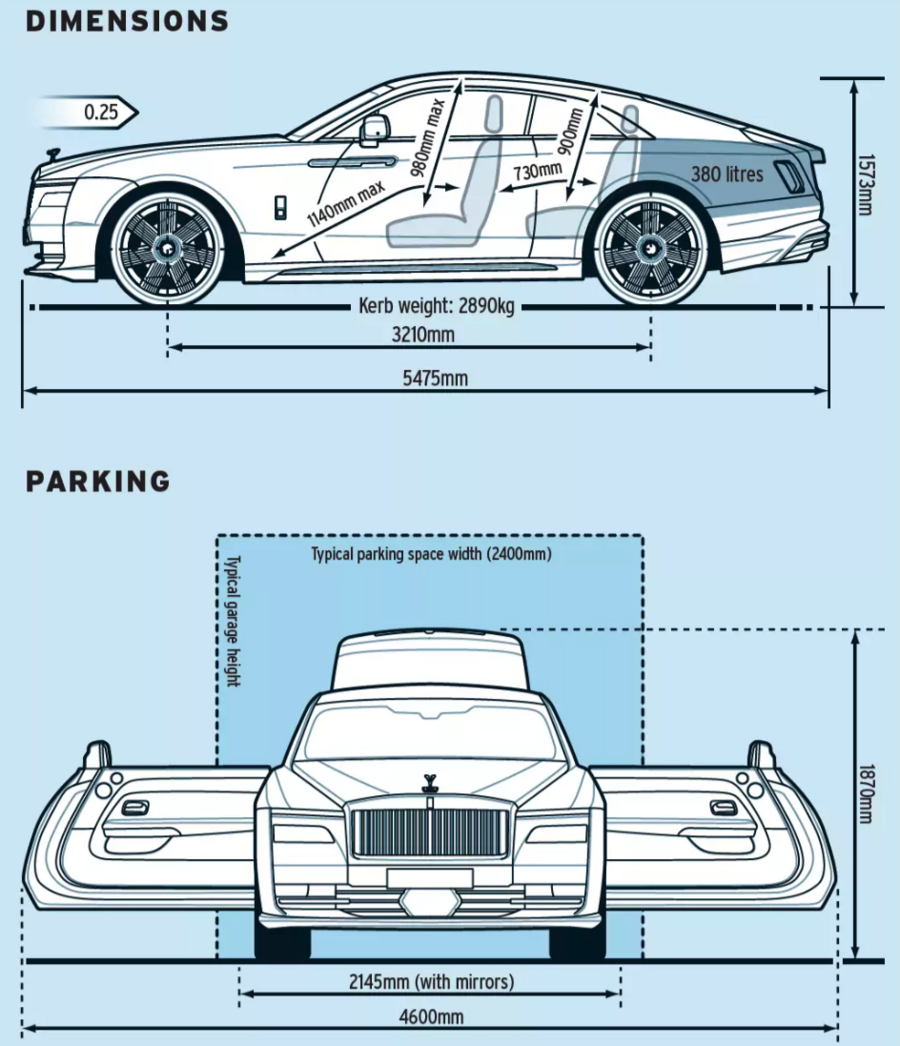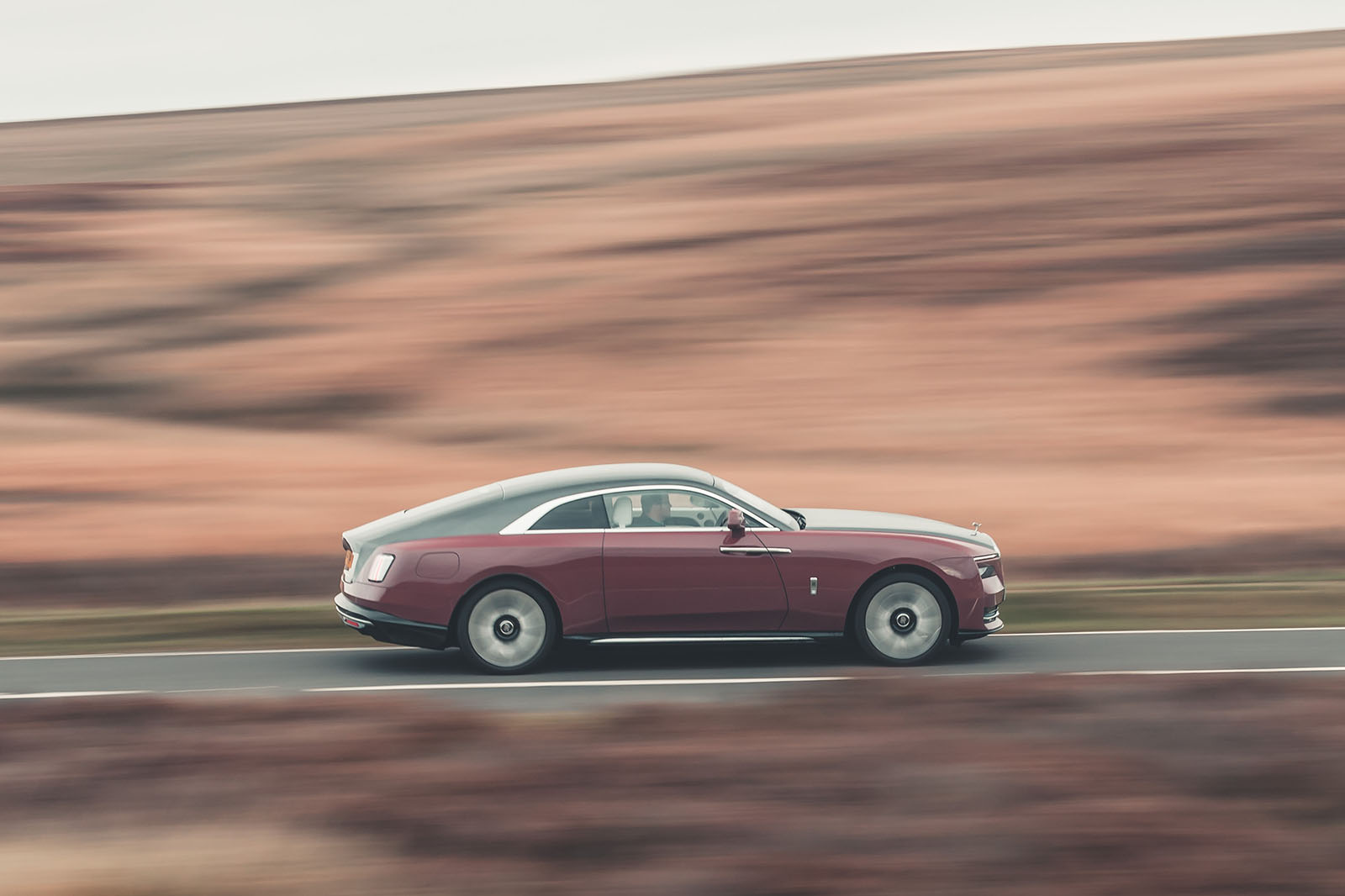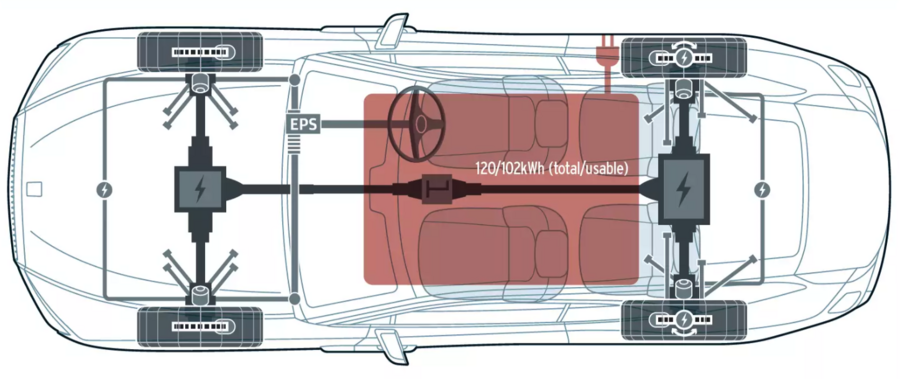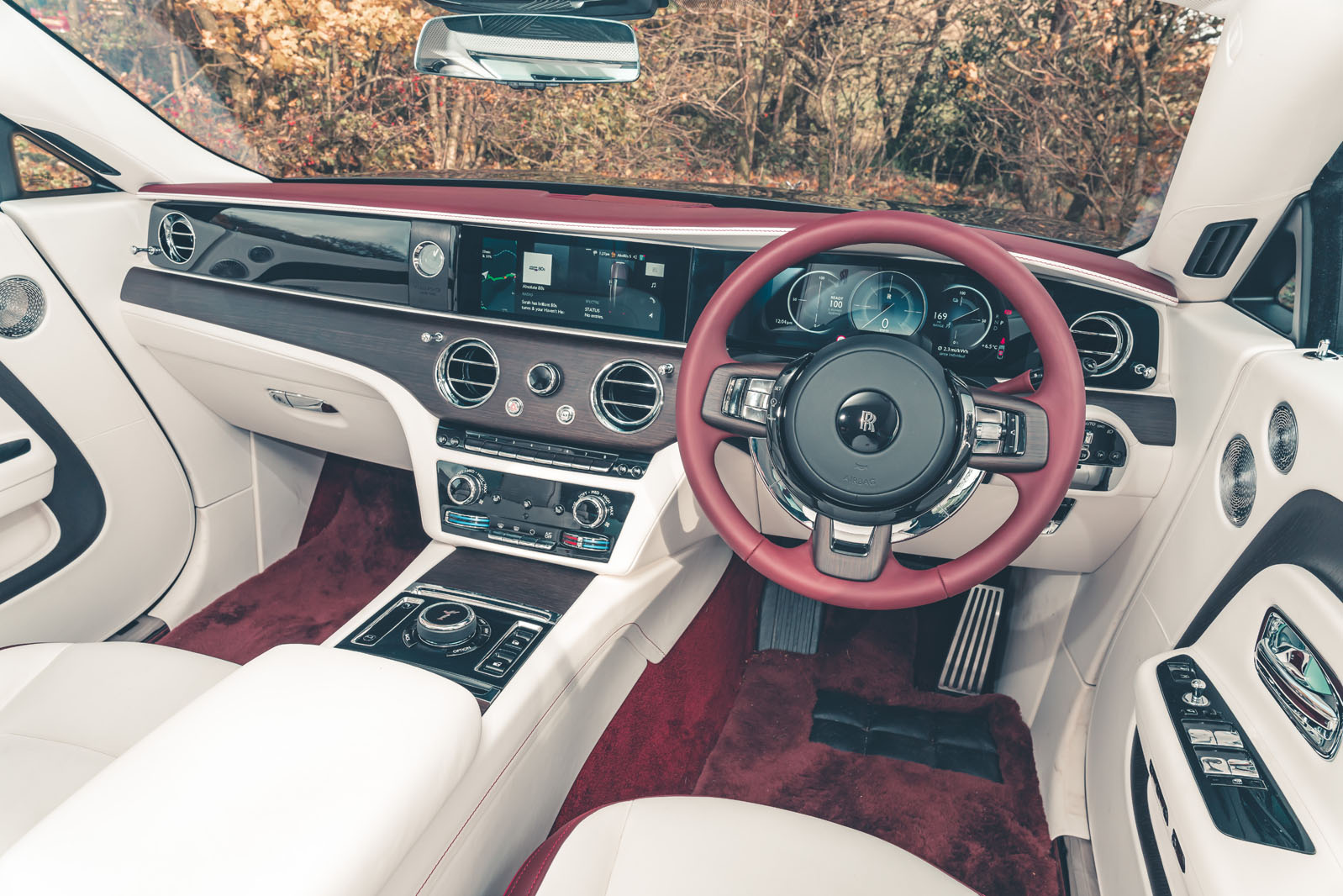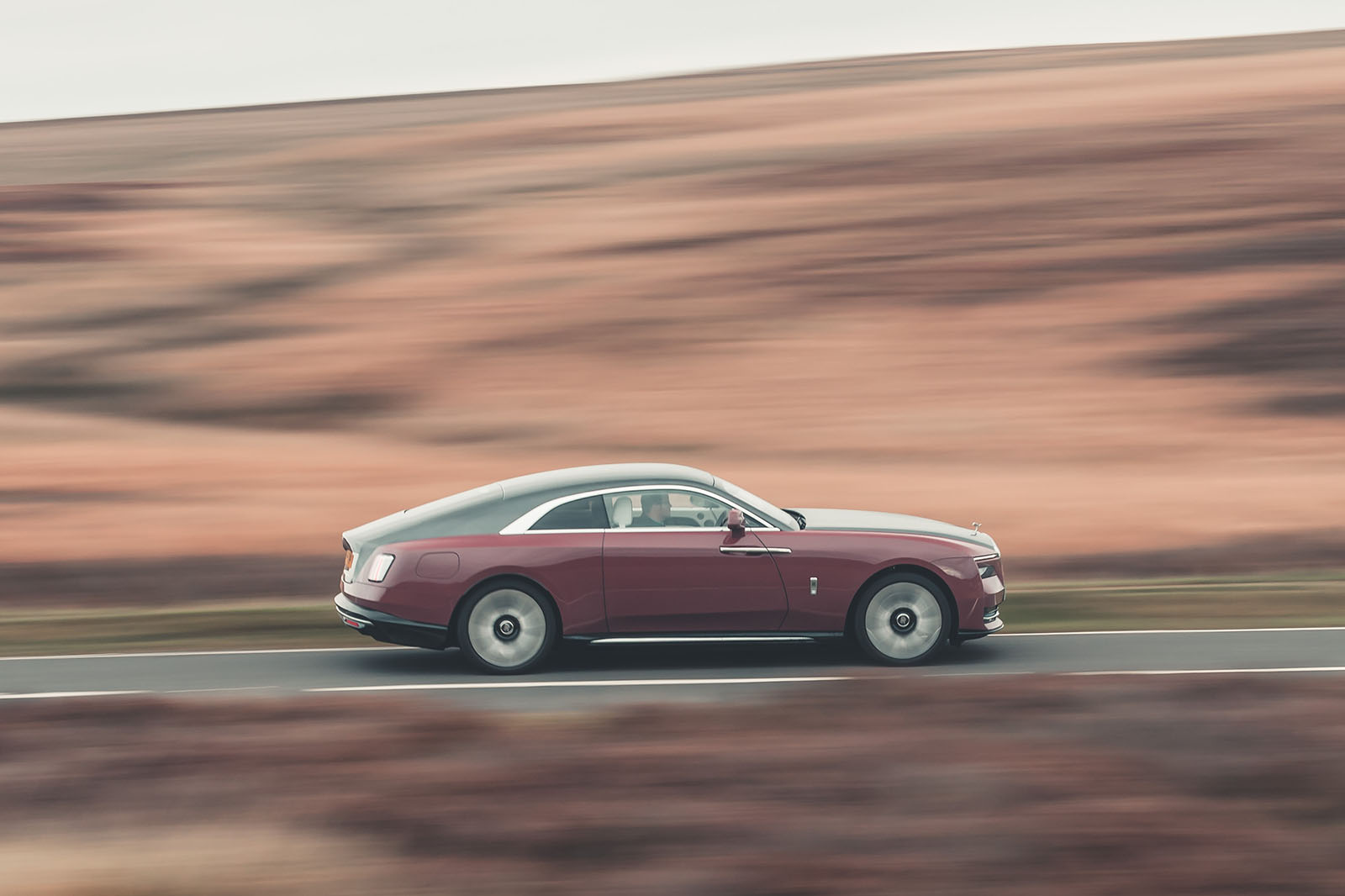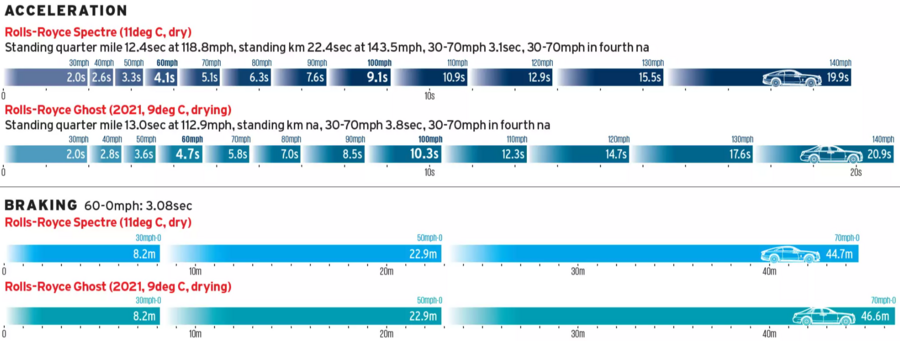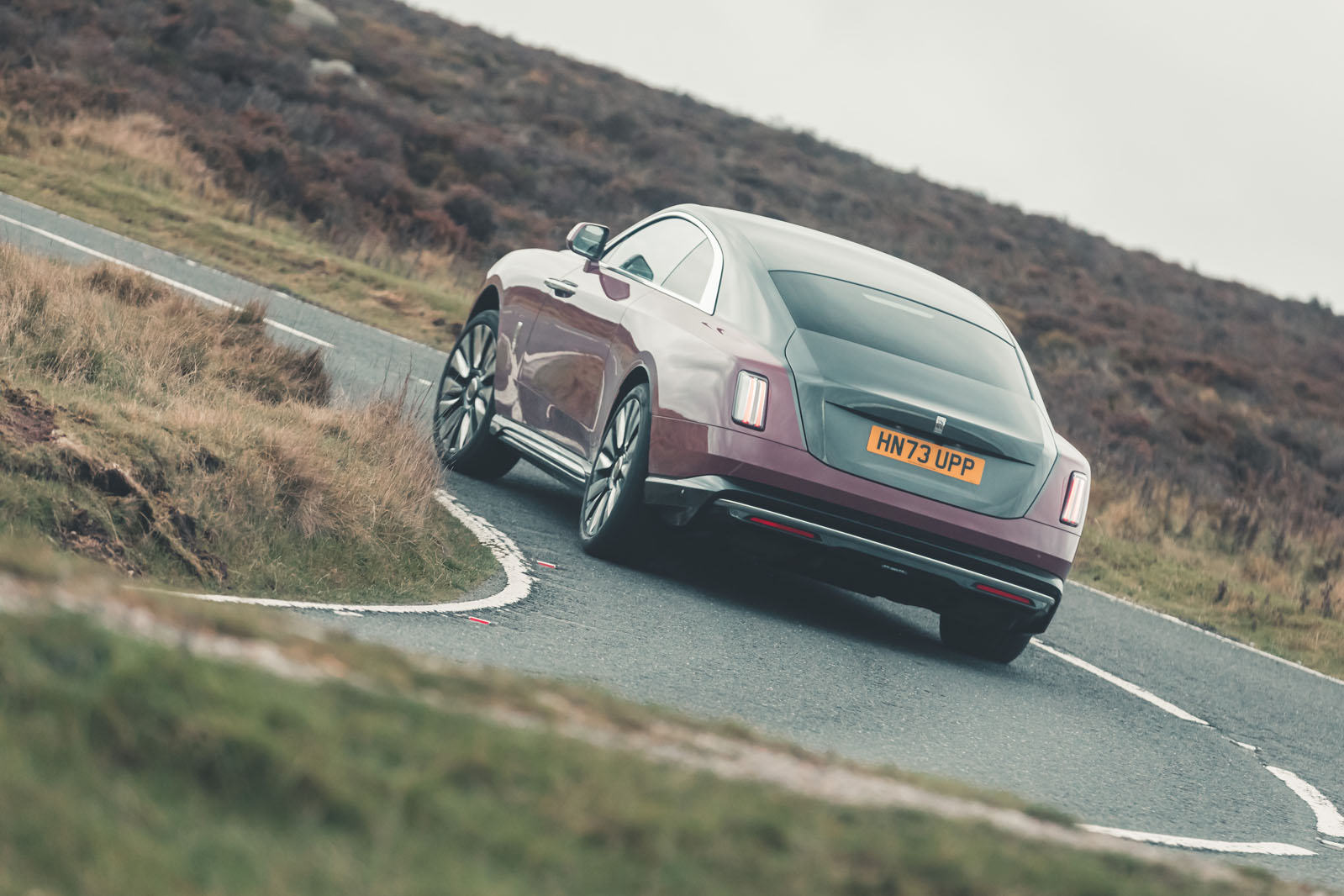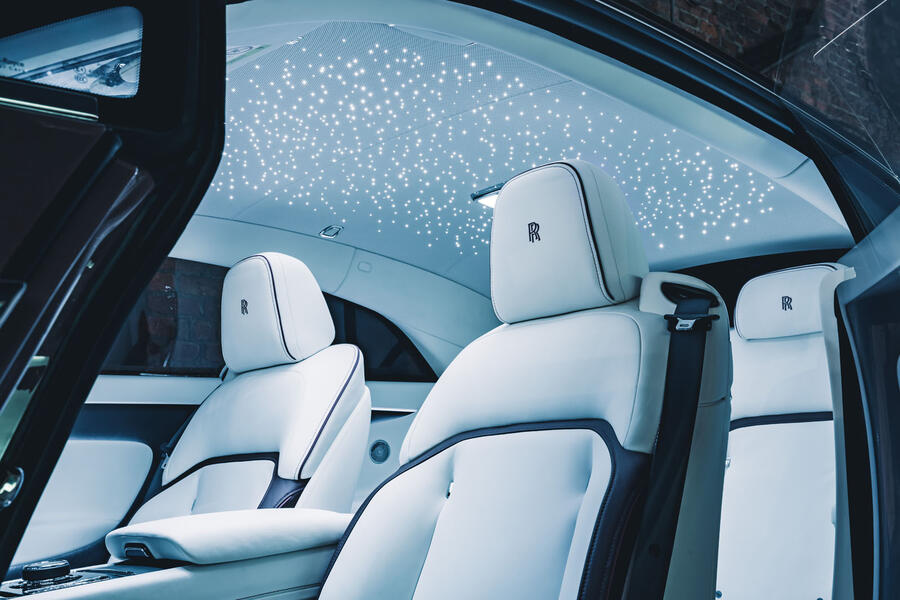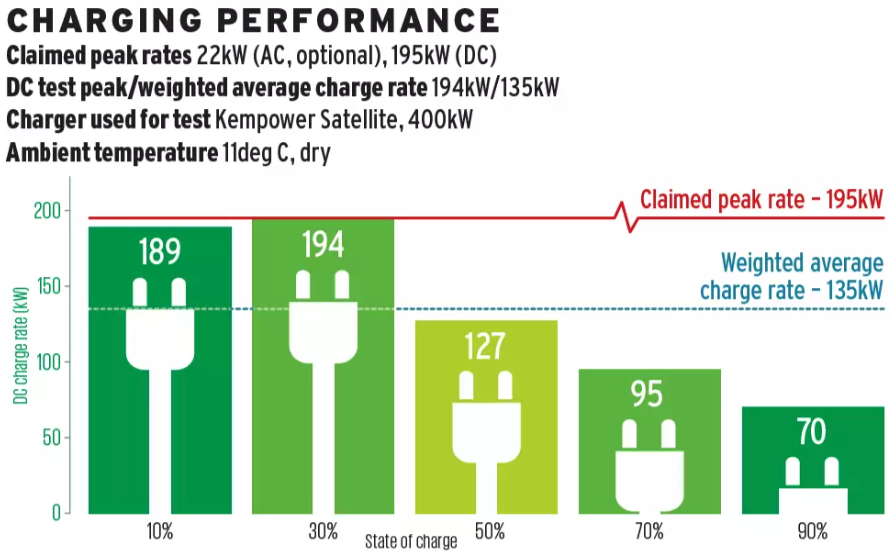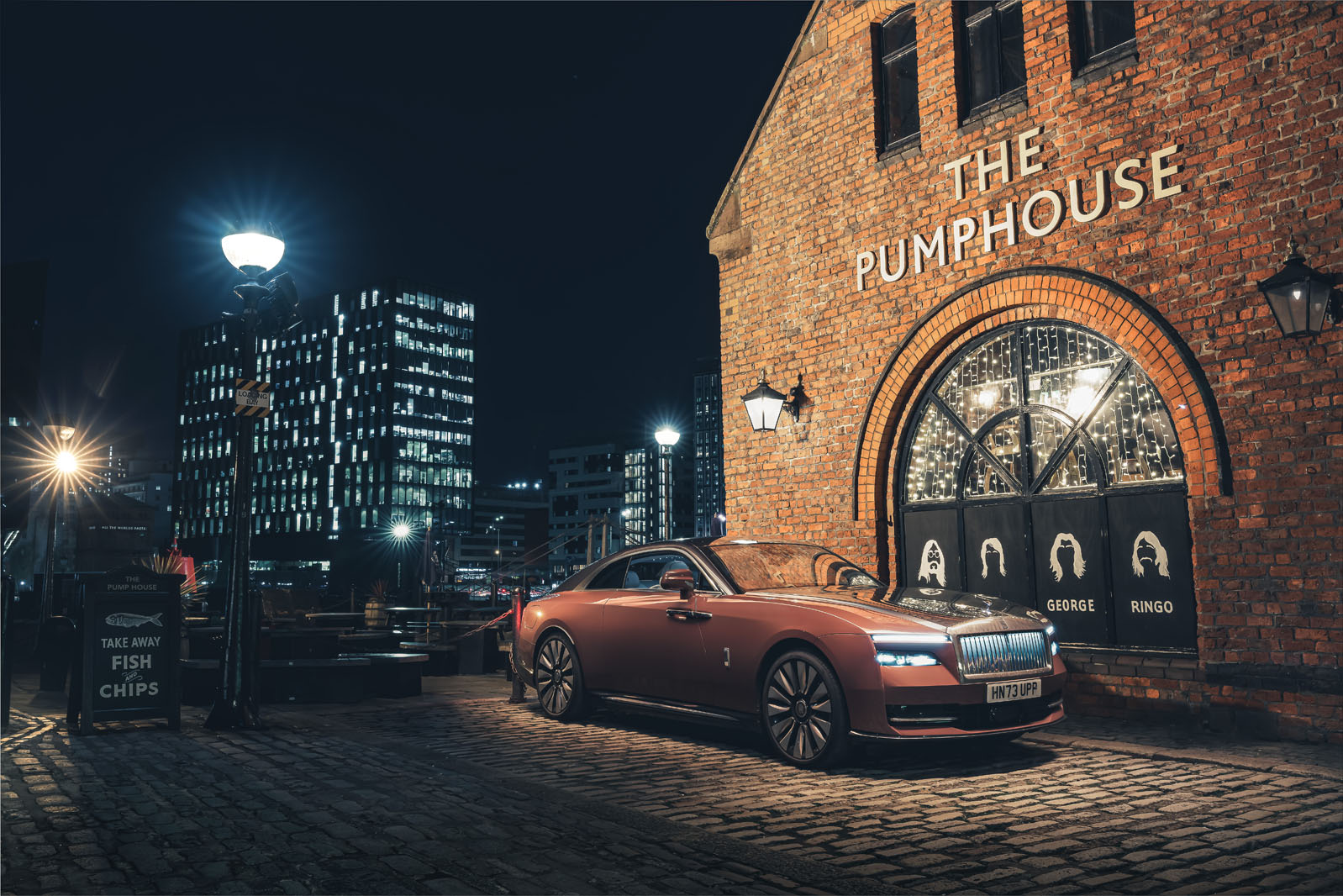The road test has been measuring what we call the ‘door span’ – the width that is occupied when the front doors are fully opened – of its subjects for several years now. In itself, it may be quite a niche dimension to record, but it’s a useful corollary of not only outright vehicle width but also ease of access within tighter confines.
Four metres is a big door span: a Rolls-Royce Ghost has a 4040mm door span, and when we measured the current Bentley Continental GTC Convertible’s door span at the beginning of this year (4180mm), we thought we might not record a larger one for some time.
The Spectre, however, turns out to be something of an automotive albatross, with a remarkable 4600mm door span. The model’s rear-hinged ‘coach’ doors – by its maker’s own claim, the largest anywhere in current global production – would make very effective air brakes.
They’re constructed entirely of aluminium but are also ‘effortless’ doors (ie they are power assisted), so you don’t open them in a conventional way. Instead, you tug discreetly on the huge polished steel door handle and then stand back as the car opens them for you. The driver’s door closes itself, too, once you’re seated and you press on the brake pedal.
Inside, the Spectre seats you a little higher and less recumbently than in some GT coupés, for the sake of convenience. You feel suitably ensconced in the beautifully soft chairs up front; in the two-seater second row, while occupant space isn’t limousine-like, there is still ample space for all but the tallest adult passengers.
The layout of the controls is appropriately conventional. The dashboard and centre console are common with those of the Ghost saloon rather than the larger Phantom. As such, there’s no disappearing infotainment screen here, but you do get traditional-looking digital instrument dials and lots of physical switchgear, into which Rolls-Royce has poured its usual attention to tactile and material detail.
There is very little here that doesn’t feel expensively wrought, from the headlight controls to the old-fashioned-looking ‘blower slider’ temperature controls.
This may be a new-age Rolls-Royce in terms of how it’s powered, but from within it’s reassuringly familiar and as rich and lavish as anything the firm makes. Rolls’ preference for digital technology integrated with restraint will be a greater selling point for some as time goes on, and its gentle touch with the car’s ambient lighting features remains singularly special.
Multimedia system
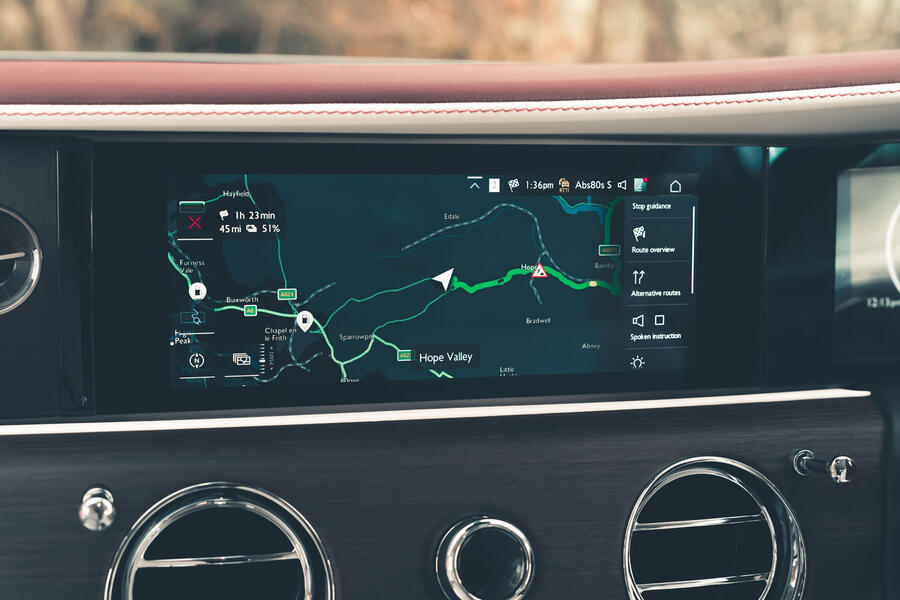
The touchscreen system in the Spectre is different from the one in the Phantom. It’s not hidden behind a separate glass screen, and it doesn’t retract from view when not in use.
It’s clearly a reskinned version of one of BMW’s later Operating System 8.0 set-ups – but it’s superior to BMW’s own in that it doesn’t integrate the ventilation controls, and it retains both an iDrive-style rotary input device and some user-programmable physical shortcut buttons that are an enormous aid to accessibility.
Rolls-Royce has integrated its own branded voice control on the system. Press the voice control button on the steering wheel and a semi-translucent image of the Spirit of Ecstasy appears on the screen, and the system then responds to natural speech recognition. You can ask it to turn up the cabin temperature,
but it won’t open and close the passenger doors.
Rolls-Royce also offers app-based remote control of the Spectre’s battery charging and preconditioning, among other things, via software called Whispers.
